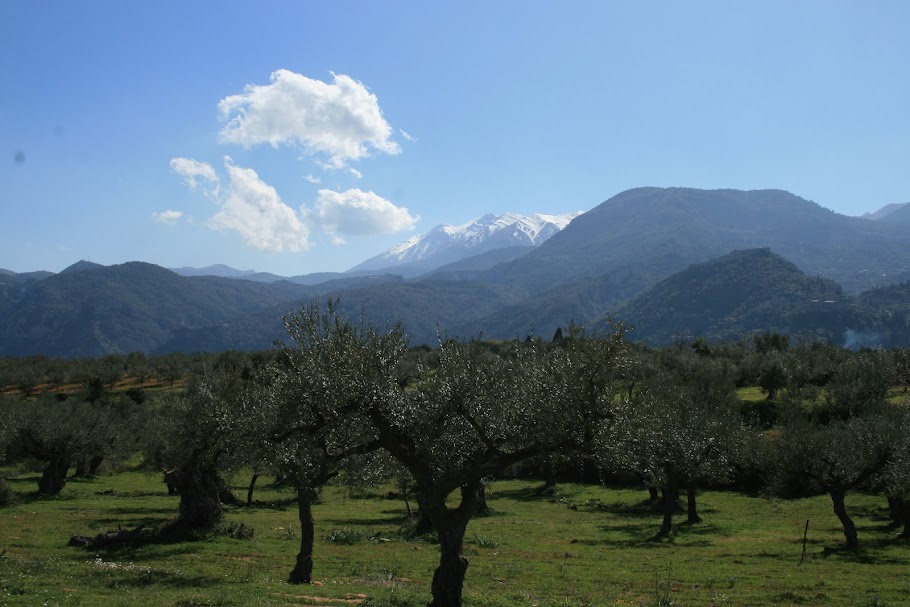At the start of the month I speculated on the way Sparta might have looked in Leonidas' time. This is another way of looking at Sparta, this time through the eyes of a Persian interpreter, used to the great, walled cities, magnificent palaces and planned gardens of the Persian empire.
"And this is it?" The Persian interpreter Zopyrus asked incredulously. "This is Sparta?" He looked around, baffled, as his chariot drew up in front of a modest, whitewashed building with a sober portico on a pleasant, but far from grandiose, square."
...
Traveling in easy stages, it had taken four months to reach their destination, and Zorypus had been looking forward to staying in one place for a month or more. Now that he was here, however, he found Sparta so disappointing that he was no longer certain he wanted to stay for long.
There was no denying that the capital of Lacedaemon lay in beautiful surroundings. It sat cupped in the hands of a fertile valley enclosed on three sides by mountains. The majestic peaks of Taygetos rose up to the west, and the Parnon range provided protection to the east. The two ranges met in the north so that as the Persian convoy worked its way up from the port of Gytheon on the Gulf of Laconia toward the city, the valley narrowed more and more.
But Sparta itself made no sense to Zopyrus. Throughout the rest of the known world, cities were surrounded by massive walls. In the more primitive countries, these might be little more than mounds of earth surrounded by ditches, but in the more civilized parts of the world, the walls were of quarried stone and fired brick. Major cities often had walls twenty yards thick and fifty yards high, strengthened with towers that stood even higher, and many walls nowadays were faced with polished stone or glazed tiles. While more prosperous cities spread beyond their walls, so that dwellings, stalls, shops and other semi-urban structures cluttered the surrounding countryside in ever greater density, all the important civic buildings and palaces of every metropolis Zopryus had seen up to now lay behind defensible walls with ramparts and fortified gates manned by soldiers.
Sparta was different. It had hundreds of temples, shrines, monuments and public buildings. It had fountains, broad avenues, gynasiums and palaestra, stoas and baths, and an amphitheater below the acropolis. It was undoubtedly urban, but because it had no walls, it seemed to sprawl across the plain as if some giant had spilled a basket full of buildings. It was haphazard. There was no urban planning. There was no gridwork of streets running at right angles to one another, and there was no logical organization into quarters for administration, trade, worship, finance and dwelling. There wasn't even any separation of rich and poor.
Furthermore, the royal palaces were primitive. Rather than sitting above the city surrounded by gardens fed by streams and encased in high, glistening walls, they were located right in the heart of the city, crowded by other buildings that had grown up around them over time. They were too cramped to be comfortable or have pretty grounds, and they were completely indefensible.


